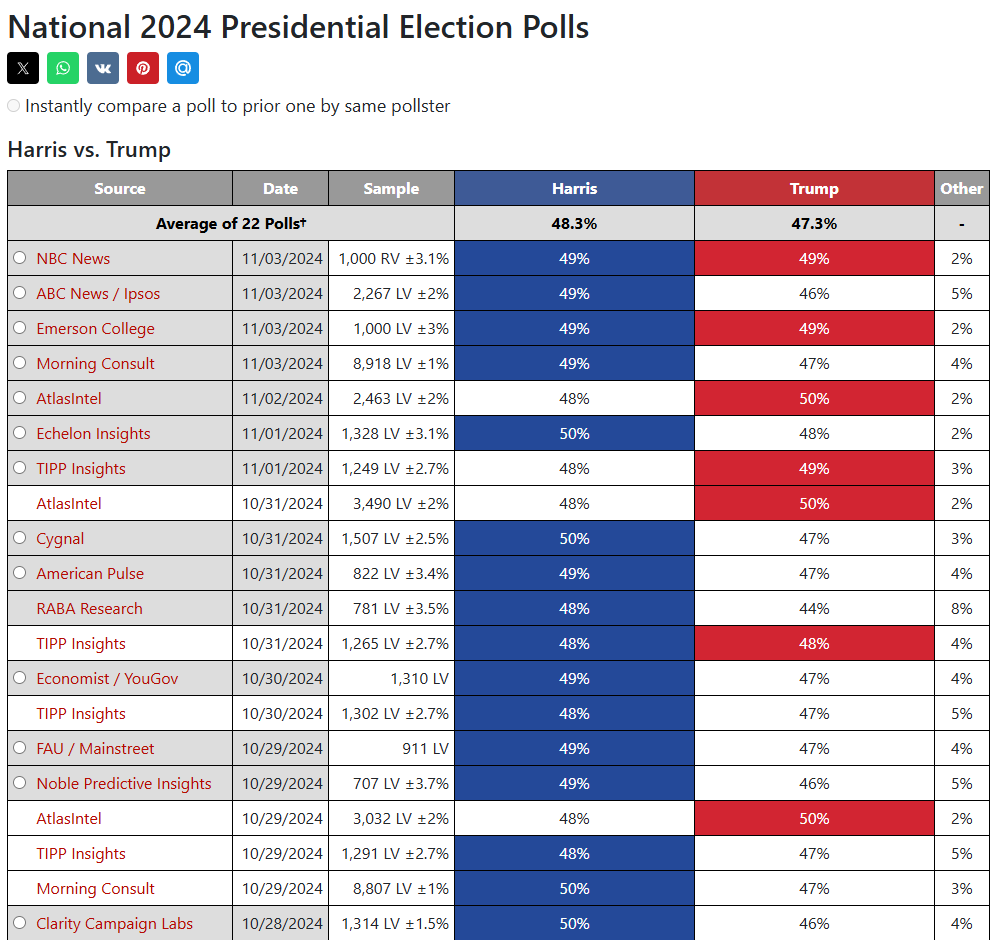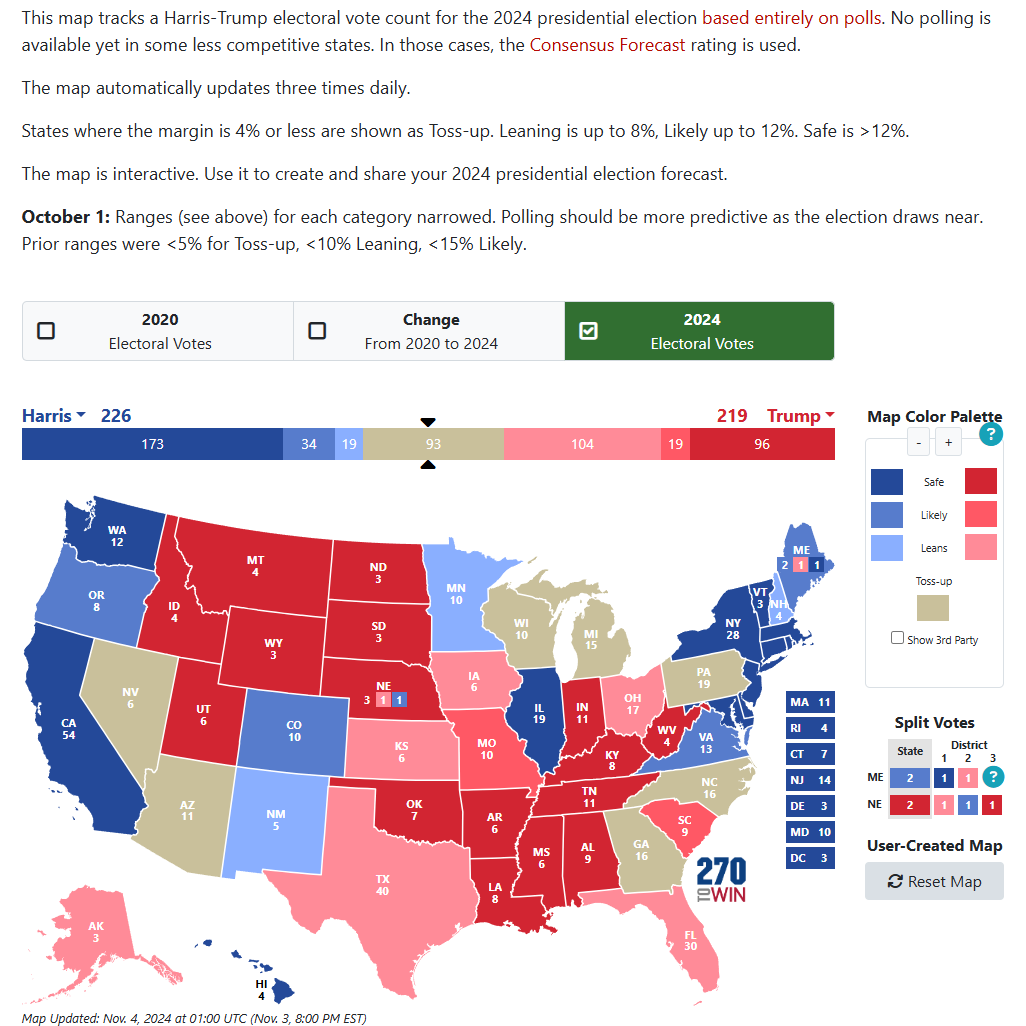The U.S. presidential election will officially begin voting on November 5, with states soon voting to select electors. This election has been described by U.S. media as "the most competitive American election in 60 years," and at this critical moment, every choice made by voters could have a profound impact on the future political landscape of the United States.
Evenly Matched Support Rates
In the tense atmosphere of the current U.S. presidential election, Vice President Kamala Harris and former President Donald Trump have nearly equal support rates, with polls indicating a very close competition between the two. The latest polls show that both major candidates, Trump and Harris, have a nationwide support rate of 49%, with 2% of voters indicating they are still uncertain about their choice.

Image source: Internet
The U.S. presidential election is ultimately decided by the Electoral College, making the outcomes in key swing states crucial to the election results. Based on the latest tracking of public opinion polls, the current electoral vote count for the 2024 presidential election stands at Harris 226, Trump 219, with Democrat Harris holding a slight lead.

Image source: Internet
Trump is actively promoting cryptocurrency policies in the election, aiming to make the U.S. a global cryptocurrency hub. His campaign strategy emphasizes economic freedom and reducing government intervention, attracting voters who are positive about cryptocurrencies. Trump has also leveraged his political influence to campaign in key states and has garnered support from Wall Street and Silicon Valley.
As the current Vice President, Harris has shown a more moderate stance on economic and immigration policies, supporting clean energy and welfare policies. Although she has shown some advantage in polls, she appears slightly weaker on key election issues such as the economy and employment.
The Crucial "Blue Wall" States
The "Blue Wall" states, namely Michigan, Pennsylvania, and Wisconsin, are typically considered key to the election outcome, as they have been important strongholds for the Democratic Party in recent elections. Maintaining the "Blue Wall" states is essential for the Democrats to secure victory.
The "Blue Wall" states supported Democratic presidential candidates continuously from 1992 to 2012, but this trend was broken in 2016 when Donald Trump won these three states, leading to his successful election as president. This indicates that losing the "Blue Wall" states could likely signal a Republican victory.
The economies of the "Blue Wall" states are primarily manufacturing-based, and many voters are concerned about employment and economic policies. Candidates need to propose economic policies that attract these voters to gain their support.
Conclusion
As the voting day on November 5 approaches, the election situation may see more variables. The final outcome of the election will depend on the allocation of votes in key swing states. Prediction markets and financial markets are closely monitoring changes in the election situation, and investors need to respond cautiously to potential market fluctuations, as the election results will have far-reaching implications for U.S. and global policy directions and market trends.
免责声明:本文章仅代表作者个人观点,不代表本平台的立场和观点。本文章仅供信息分享,不构成对任何人的任何投资建议。用户与作者之间的任何争议,与本平台无关。如网页中刊载的文章或图片涉及侵权,请提供相关的权利证明和身份证明发送邮件到support@aicoin.com,本平台相关工作人员将会进行核查。




